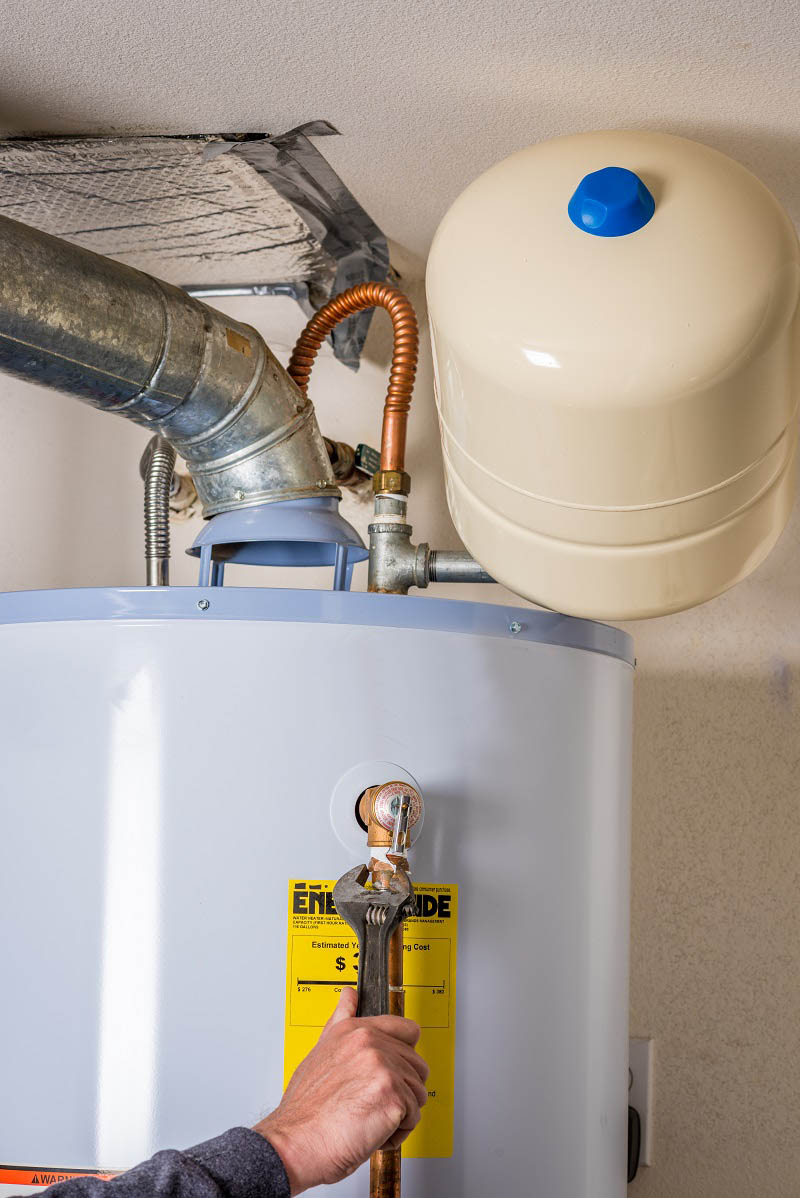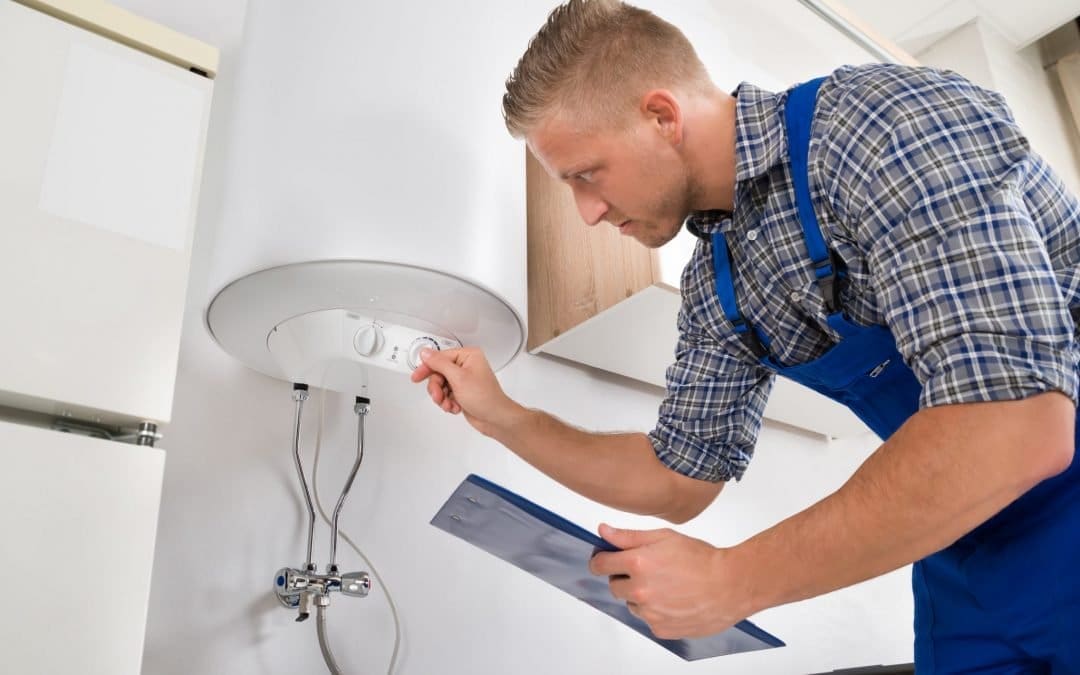Key Measures for Home Owners Managing Broken Hot Water Systems
Key Measures for Home Owners Managing Broken Hot Water Systems
Blog Article
What're your opinions regarding Maintaining & Draining a Water Heater?

Whether it is situated in the basement or a separate area, busted water heating systems can trigger stress. Having no hot water supply is also troublesome.
Shut Down Power Source
Before calling the plumber, shut off a gas water heating system by transforming the temperature level dial. This will certainly avoid electrocution, especially if there is a leak as water is a conductor. Commonly, the home heating element closes off when the water strikes a details temperature level.
Cut Off the Cold Water Supply
Cut off the storage tanks touch water supply from the source. When your storage tank is in great problem, the cool water quits loading up when the storage tank is full. If you can not locate it or reach it, you must transform off that primary water supply line outside your residential property.
Call the Plumber
After doing the first two security actions, you must call your plumber to come right away to deal with a ruptured water heater. There are generally indicators that your aging water heating unit has sediment buildup in the inside.
Rather, as quickly as you spot these indications, have an expert come to check your water heating system give thanks to. Commonly, water heaters have a life-span of about 8 to 12 years.
Clean Up Property
After calling the plumber, paper damages by taking notes and pictures so you can claim your property owner's insurance coverage. From there, begin the prompt cleanup. Secure any crucial valuables to stop more saturating. Get rid of any standing water to protect against mold as well as mildew development. Utilize that to drain pipes the water if you have a submersible water pump. Otherwise, the conventional pail approach will likewise function. Attempt to mop out everything, including walls and walls. If you have an electrical fan as well as dehumidifier, keep them running to keep air distributing. This will certainly help hinder mold growth.
Remember, if you notice any type of problems with your water heater, call the pros right now. You can not take this issue lightly because a defective thermostat can increase water temp to a dangerously high level, leading to accidental burns. A damaged heater stress safety valve can also trigger a surge. For best outcomes, get a yearly check so your device gets evaluated, cleaned up, drained, and also re-filled, guaranteeing ideal efficiency.
Whether it is located in the cellar or a different area, damaged water heating systems can create stress and anxiety. Before calling the plumber, closed off a gas water heating unit by transforming the temperature level dial. After doing the very first 2 security actions, you have to call your plumber to come right away to deal with a fractured water heater. If you have a submersible water pump, use that to drain pipes the water. Keep in mind, if you see any type of issues with your water heating unit, call the pros right away.
8 REASONS YOUR HOT WATER HEATER IS NOT WORKING & HOW TO FIX
Water Heater Problems & Solutions
Loose or Damaged In-Line Valve
Unlike a water leak near the bottom of your water tank, a water leak on top of your system can be easily fixed. A common cause of water tank leaks includes a loose in-line valve. This is a handle that is located at the top of the water tank that is engineered to activate or deactivate the flow of water. To fix this problem, you will need to secure the nut that holds the ball or in-line valve in its location. If the leak becomes more severe once it is tightened, you will be required to travel to your local hardware store to purchase a new in-line valve for your water heater.
Damaged Pressure Relief Valve
Most types of water heaters are equipped with a pressure relief valve that is engineered to discharge pressure from the water tank when it becomes too high. If this valve on top of your water heater begins to leak, we recommend purchasing a new one online or from your local store. The process of removing and replacing pressure relief valves is not complicated.
No Warm Water
If you have an electric water heater in your home, the most typical cause of a lack of warm water is a broken heating element. Your water heater is equipped with two heating elements that are tasked with heating incoming water in the water tank. Once a heating element begins to malfunction, you will have little to no hot water to use for showering, cleaning, and laundry.
Low Supply of Hot Water
Are you continuously running out of warm water? This issue may be a byproduct of a cracked dip tube. This tube is engineered to push cold water to the base of your water tank to be heated. Once a crack or hole begins to form in the dip tube, the incoming supply of cold water may be released near the top or middle of your tank. As a result, the cold water on top of the tank will be sent to the faucets and showers in your house. This hot water heater problem can only be fixed by replacing the dip tube on your system. Since the process of installing a new dip tube is complex, we recommend calling a certified technician for help.
A low supply of warm water may also be a signal of excess sediment buildup in your water tank. As your water heater reaches the middle of its life cycle, minerals in water including magnesium and calcium will begin to collect at the base of the water tank. As the minerals continue to grow, there will be less room in the water tank to store hot water. To resolve this problem, flush your water heater to remove the excess minerals.
Water is Too Warm or Cold
If the water in your shower feels uncomfortable hot or cold, you can adjust the temperature of your water by changing the settings on your thermostat. Setting the temperature to 120 degrees Fahrenheit may help you save money on your utility bills. This is an excellent temperature to use if you’re worried about scalding or skin irritation. Does this temperature feel too cold? You may also adjust the thermostat to 140 degrees Fahrenheit to make your showers more pleasant. If your hot water heater is not working when you change the temperature, this is an indicator of a broken thermostat. Immediately find a certified plumbing or heating contractor in your area to repair or replace your thermostat.
Low Water Pressure
Low water pressure is not always caused by a malfunctioning water heater. If you live in an older home with smaller water pipes, the flow of water will be restricted prior to reaching our kitchen or bathroom skins. The only way to eliminate this hot water heater problem is to connect new ¾-inch water lines to your system. Another type of problem that may negatively impact your water pressure includes calcium deposits in water pipes.
As magnesium and calcium begin to form in your pipes, the diameter of your water lines will become smaller. As a result, the warm water from your water heater will not be able to travel in an efficient manner to your sinks or appliances. Since the process of replacing water pipes includes removing drywall, an average homeowner that does not have a plumbing license will not be able to fix this hot water heater problem.
https://www.wmhendersoninc.com/blog/8-reasons-your-water-heater-is-not-working-how-to-fix/

I was made aware of that editorial on Broken Water Heaters from an associate on a different site. Make sure you take the opportunity to distribute this post if you enjoyed reading it. Thanks a lot for going through it.
Expertise available here. Report this page